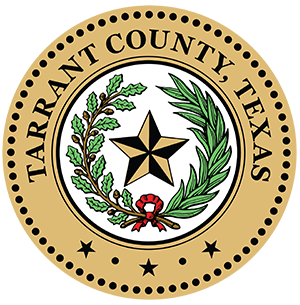Special Needs
Preparedness for People with Special Needs
In the event of a disaster or widespread emergency, do you know how to respond? To improve emergency preparedness readiness for our community, we must consider the abilities of each person to care for themselves at a time when help may be limited or take some time to arrive. First responders can perform their duties more successfully when people with special needs take the initiative to plan ahead.
People with a disability (such as Mobility, Visual, Communication, Cognitive, Psychiatric, Hearing, etc.) may require assistance from relatives, friends or caregivers in order to achieve a satisfactory level of preparedness. The important thing is to start preparing. The more you do, the more confident you will be that you can protect yourself, your family and your belongings.
The Six Most Important Things to do:
1. Complete an emergency contact list. Ask several relatives or friends who live outside your immediate area (between 50 and 100 miles away) to act as a clearinghouse for information about you and your family after a disaster. It is often easier to place an out-of-state long distance call from a disaster area, than to call within the area. All family members should know to call the contact person to report their location and condition. Once contact is made, have the contact person relay messages to your other friends and relatives outside the disaster area. This will help to reduce calling into and out of the affected area once the phones are working.
2. Register with a special needs program for assistance during times of emergency:
Community Connect - Community Connect is a free, secure platform that allows residents to share important information about their households with first responders. This information helps emergency personnel respond more effectively and efficiently. All data is securely stored to ensure your privacy and used to enhance emergency response and keep your household safe.
State of Texas Emergency Assistance Registry (STEAR) - STEAR is a free registry that provides local emergency planners and emergency responders with additional information on the needs in their community. Tarrant County uses the registry information in different ways. Registering yourself in the STEAR registry DOES NOT guarantee you will receive a specific service during an emergency. Available services will vary by community.
3. Collect emergency documents, including important information typically needed after a disaster. Store emergency contact list and documents in your own emergency supply kit, wallet or safe deposit box and give copies to your personal support network and out of area contact. Copies of your emergency documents should include:
Specifications for adaptive equipment (in case it needs to be replaced). List style and serial numbers of medical devices; such as pacemakers.
Proof of ownership or lease of your residence. (This is important when applying for disaster assistance after the disaster.)
Social security number and those of your family members.
Vehicle, boats, etc. - make & model, identification and license numbers.
Bank account numbers and credit account numbers.
Will/living trust and letter of instructions.
Insurance policy numbers.
Securities, deeds and loan numbers including company name, address and telephone numbers.
Photos or video of all valuables for documentation of insurance claim. (This inventory should be backed up on disk if it is on computer. Consider documenting your possessions on film with a video or camera.)
Important business documents.
Family records (birth, marriage, death certificates).
4. Assemble your own emergency supply kit. Use a duffle bag or backpack to hold the contents of your kit, and label it with your name and phone number. Store your emergency supply kit in a place that is cool and dry, and easy for you to reach. A list of contents can be located under the Public Health Preparedness Publications section of this website.
5. Review and Update Your Plans Every Six Months (or when you change the clocks).
Emergency Health Information Card
SNAP registration data
Emergency Contact List
Emergency Supply Kit
6. Consider various sheltering options. Sheltering in place at home or work often is the safest and least stressful alternative to evacuation. However, if you can leave your community before a known threat arrives, do it. Try to take refuge with friends and family first. Otherwise the nearest special needs shelter might be your best available option where your medical needs can receive appropriate attention.
Additional considerations for people with special needs:
Provide the power company with a list of all power-dependent life-support equipment and plan for an alternate power source in advance.
In the event you are home alone or unable to converse with responders, display important health and medical information on your refrigerator for rapid access by first responders. For information on obtaining a refrigerator magnet containing this vital information, call Tarrant County Public Health Preparedness at 817-321-4879.
Practice Assertive Communication by carrying a written copy of key phrases such as: "I cannot read. I can point to pictures or key words you will find in my emergency kit" "I may have difficulty understanding what you are telling me. Please speak slowly and use simple language." "I forget easily. Please write down information for me."
Protect monthly benefits that may be mailed to your home by enrolling in direct deposit programs.
Contact the Public Health Preparedness office at 817-321-4879 for more resources and information.
To request a written transcript of this video, contact Ready.gov. Please mention the name of the article or video in your request.


 TARRANT COUNTY, TX
TARRANT COUNTY, TX

 Public Health Preparedness
Public Health Preparedness